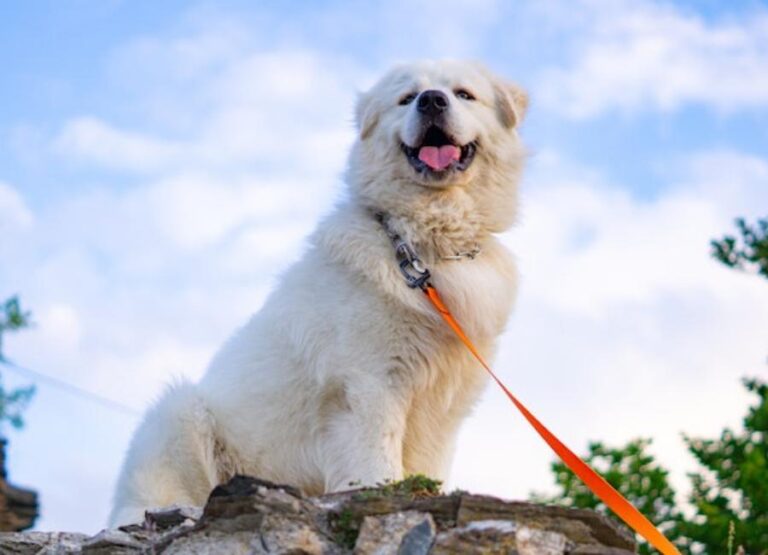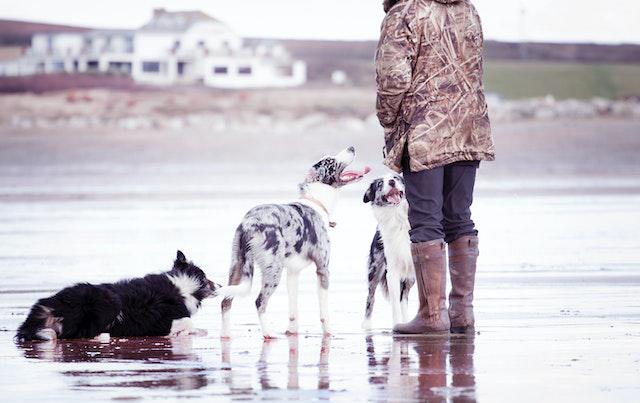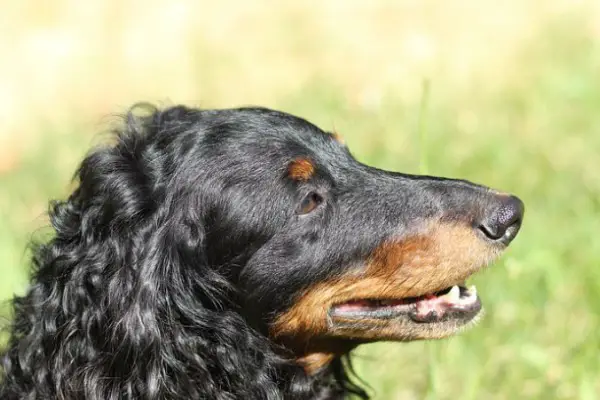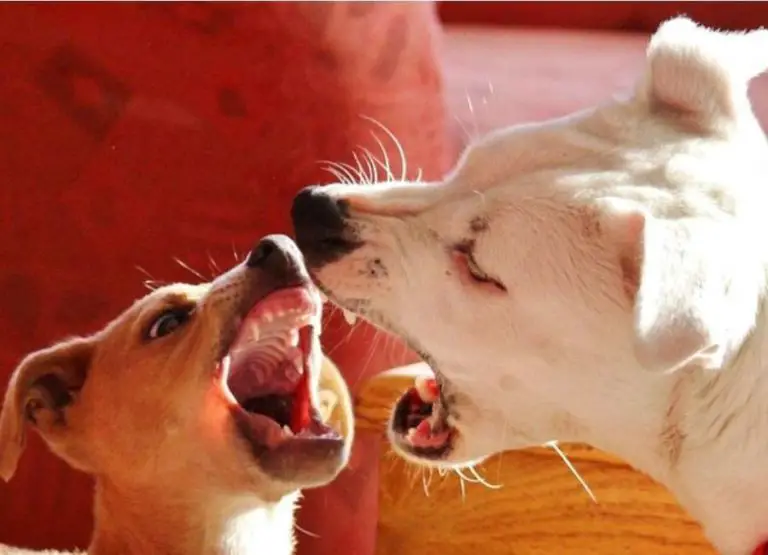7 Causes of Conflict Aggression in Dogs With Tips
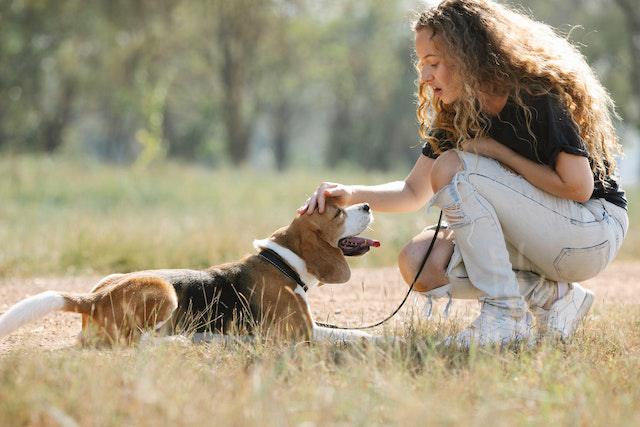
Today, let’s dive into a topic that can sometimes make us scratch our heads: conflict aggression in dogs.
We all know our furry friends can occasionally get into squabbles, but understanding the root causes and how to handle them can make a world of difference.
So, let’s get started!
What is Conflict Aggression in Dogs?
Conflict aggression in dogs refers to aggressive behavior displayed by dogs in response to conflicts or perceived threats. It can occur between dogs or between a dog and a human.
Conflict aggression may manifest as growling, barking, lunging, or biting, and is often triggered by resource guarding, territorial disputes, or fear.
Proper training, socialization, and behavior modification techniques can help address and manage conflict aggression in dogs.
Read more about different forms of dog aggression.
Causes of Conflict Aggression in Dogs
It is important to understand the causes of conflict aggression in order to address and manage this behavior effectively.
Here are some common triggers and factors that contribute to conflict aggression in dogs:
1. Fear and Anxiety: Many dogs exhibit aggression when they are fearful or anxious. They may feel threatened or uncertain in certain situations, leading to defensive aggression. Dogs may display body postures and facial expressions that reflect their conflict, such as averting their eyes, licking their lips, turning away their head and/or body, and crouching down. They may also growl as a way to diffuse what they perceive as a threat.
2. Resource Guarding: Conflict aggression can occur when dogs feel the need to protect their resources, such as food, toys, or territory. Dogs may become possessive and aggressive when they perceive a threat to their valued possessions.
3. Invasion of Personal Space: Dogs may exhibit conflict aggression when their personal space is invaded or when they feel uncomfortable with close proximity. This can happen when someone approaches them too quickly or invades their personal boundaries.
4. Grooming or Handling: Conflict aggression can also be triggered during grooming or handling procedures that the dog finds uncomfortable or distressing. Dogs may display warning signs, such as growling, prior to a bite incident.
5. Hormonal Factors: Hormones, such as testosterone, can influence aggression in dogs. Male dogs, especially during adolescence, may have higher testosterone levels, which can make them more reactive and prone to aggression. However, female dogs can also exhibit aggression due to hormone imbalances.
6. Lack of Socialization and Training: Dogs that have not been properly socialized or trained may have difficulty coping with new or challenging situations. This lack of exposure and skills can contribute to conflict aggression as the dog may feel overwhelmed or unsure of how to respond.
7. Previous Negative Experiences: Dogs that have had traumatic or negative experiences in the past may be more prone to conflict aggression. These experiences can create fear, anxiety, or a heightened sense of defensiveness, leading to aggressive behavior.
Read more about some common things that lead to dog aggression.
Signs of Conflict Aggression in Dogs
Conflict aggression in dogs refers to aggressive behavior that arises from conflicts or disputes. Here are some signs of conflict aggression in dogs:
- Growling and Snarling: Dogs may growl and snarl when they are feeling threatened or challenged. This is a warning sign that they are ready to defend themselves.
- Barking and Lunging: Dogs may bark and lunge at other dogs or people when they feel threatened or want to establish dominance. This behavior is often accompanied by raised hackles and a tense body posture.
- Showing Teeth: Dogs may show their teeth as a sign of aggression. This is a warning sign that they are ready to bite if the threat continues.
- Resource Guarding: Dogs may become aggressive when they feel their resources, such as food, toys, or territory, are being threatened. They may growl, snap, or bite to protect what they consider theirs.
- Fighting with Other Dogs: Dogs may engage in fights with other dogs, especially if they are vying for dominance or resources. This can be seen as aggressive behavior and can result in injuries.
- Escalating Aggression: Conflict aggression in dogs can escalate over time if not addressed. It is important to recognize the early signs and seek professional help to prevent the aggression from worsening.
Read more about identifying dog aggression.
How to Stop Conflict Aggression in Dogs
To stop conflict aggression in dogs it’s important to create a calm and structured environment.
Firstly, establish clear rules and boundaries for your dog, and consistently enforce them. Secondly, provide regular exercise and mental stimulation to help release excess energy.
Thirdly, practice positive reinforcement training techniques, rewarding good behavior, and redirecting or ignoring aggressive behavior.
Lastly, manage triggers and avoid situations that may provoke aggression.
Read more about stopping dog aggression.
Managing Conflict Aggression in Dogs
Managing conflict aggression in dogs requires a systematic approach to address the underlying causes and modify the dog’s behavior.
Here is a step-by-step process for managing conflict aggression in dogs:
Step 1: Identify the Triggers and Underlying Causes
The first step is to identify the triggers that lead to conflict aggression in your dog. This could include situations, objects, or interactions that provoke aggressive behavior.
It’s important to understand the underlying causes of the aggression, which can include fear, resource guarding, territoriality, or social dominance.
Step 2: Consult with a Professional
It is highly recommended to seek guidance from a professional dog behaviorist or trainer experienced in dealing with aggression issues.
They can assess the situation, provide an accurate diagnosis, and develop a customized behavior modification plan for your dog.
Step 3: Create a Safe Environment
Ensure the safety of all individuals involved, including yourself, family members, and other pets.
Implement management strategies such as using a leash, muzzle, or baby gates to prevent potential conflicts and keep everyone safe during the behavior modification process.
Step 4: Implement Behavior Modification Techniques
Work with the professional to implement behavior modification techniques tailored to your dog’s specific aggression issues.
This may involve desensitization and counterconditioning exercises to change your dog’s emotional response to the triggers.
Positive reinforcement training methods should be used to reward desired behaviors and redirect your dog’s focus away from aggression.
Step 5: Consistency and Patience
Consistency is key when dealing with conflict aggression in dogs. Follow the behavior modification plan consistently and patiently.
It may take time for your dog to show progress, so be prepared for setbacks and continue working with the professional to make necessary adjustments to the plan.
Step 6: Manage and Control the Environment
While working on behavior modification, it’s important to manage and control the environment to prevent situations that may trigger aggression.
This may involve avoiding certain triggers, providing a structured routine, and gradually exposing your dog to controlled social interactions.
Step 7: Monitor Progress and Seek Support
Regularly monitor your dog’s progress and seek support from the professional throughout the process.
They can provide guidance, make necessary adjustments, and help you understand your dog’s behavior better.
Step 8: Maintain Training and Seek Ongoing Support
Even after significant progress has been made, it’s important to continue training and provide ongoing support for your dog. This will help maintain the desired behaviors and prevent regression.
Remember, dealing with conflict aggression in dogs can be a complex and challenging process. It’s crucial to work with a professional who can provide guidance and support throughout the journey.
Preventing Conflict Aggression in Dogs
Preventing conflict aggression in dogs is essential for the safety and well-being of both the dogs and their owners. Here are some ways to prevent conflict aggression in dogs:
1. Early Socialization and Training: Early socialization is crucial for dogs to learn appropriate behavior and develop positive associations with other dogs and people.
Training should focus on teaching basic obedience commands and reinforcing good behavior. Positive reinforcement techniques, such as rewards and praise, are effective in shaping desirable behavior and preventing conflict aggression in dogs.
2. Proper Supervision and Management: Proper supervision is important to prevent conflicts from escalating. Owners should closely monitor their dogs’ interactions with other dogs and intervene if necessary.
Management techniques, such as using leashes, fences, or crates, can help prevent situations that may trigger conflict aggression.
3. Recognizing and Addressing Fear and Anxiety: Fear and anxiety can contribute to conflict aggression in dogs. It is important for owners to recognize signs of fear and anxiety in their dogs and address them appropriately.
This may involve desensitization and counterconditioning techniques, as well as providing a safe and calm environment for the dog.
4. Avoiding Triggers and High-Stress Situations: Identifying and avoiding triggers that may lead to conflict aggression in dogs is crucial. This may include avoiding crowded or overwhelming environments, keeping dogs on a leash in public places, and providing a quiet and secure space at home.
High-stress situations, such as rough play or resource guarding, should also be managed carefully to prevent conflicts.
5. Neutering/Spaying: Neutering or spaying dogs can help reduce conflict aggression, especially in cases related to hormones and reproductive behaviors.
However, it is important to consult with a veterinarian to determine the best course of action based on the individual dog’s behavior and health.
6. Seeking Professional Help:
If a dog displays persistent conflict aggression or if conflicts cannot be resolved through preventive measures, it is important to seek professional help from a qualified dog trainer or behaviorist.
They can assess the situation, provide guidance, and develop a tailored behavior modification plan to address the aggression.
Remember, preventing conflict aggression in dogs requires a combination of proactive measures, proper training, and responsible ownership.
By implementing these practical strategies, dog owners can create a safe and harmonious environment for their pets and prevent conflicts from escalating into aggression.
Read more about preventing dog aggression.
Frequently Asked Questions
What are the common triggers for conflict aggression in dogs?
Several triggers can lead to conflict aggression in dogs. Some common triggers include resource guarding (such as food or toys), territorial disputes, fear or anxiety, and social conflicts with other dogs or humans. It’s essential to identify these triggers to prevent and manage aggression effectively.
How can I prevent conflict aggression in my dog?
Preventing conflict aggression involves understanding your dog’s triggers and working on positive training and socialization. Providing a structured environment, consistent rules, and positive reinforcement can help minimize potential conflicts. It’s also crucial to address any signs of fear or anxiety early on and seek professional help if needed.
Can conflict aggression in dogs be treated?
Yes, conflict aggression in dogs can be treated with the help of a professional dog trainer or behaviorist. They can assess the underlying causes of aggression, develop a behavior modification plan, and guide you through the training process. Patience, consistency, and positive reinforcement are key to successful treatment.
Should I punish my dog for displaying conflict aggression?
No, punishing a dog for displaying conflict aggression is not recommended. Punishment can exacerbate fear and anxiety, leading to more aggressive behavior. Instead, focus on positive reinforcement, reward-based training, and seeking professional guidance to address and modify the underlying causes of aggression.
Are some dog breeds more prone to conflict aggression?
While certain dog breeds may have a higher tendency towards aggression due to genetics or historical purposes, it’s important to remember that individual temperament and upbringing play a significant role. Any dog, regardless of breed, can develop conflict aggression if not properly trained, or socialized, or if they experience fear or anxiety. Responsible ownership, early intervention, and proper training can help prevent and manage aggression in all breeds.
Conclusion
In conclusion, when it comes to conflict aggression in dogs, understanding the underlying causes and implementing proper training techniques is crucial.
Remember, every dog is unique, and with patience, consistency, and positive reinforcement, we can help our furry friends overcome their aggression and lead happier, more harmonious lives.
So let’s work together to create a world where dogs can be their best selves, free from the grips of aggression.

![Dog Desensitization Training [How & When to Use] Dog Desensitization Training](https://petcreeks.com/wp-content/uploads/2023/12/pexels-sarah-chai-7282827.jpg)
![Social Aggression in Dogs [Causes, Signs & Fix] Social Aggression in Dogs](https://petcreeks.com/wp-content/uploads/2023/10/pexels-yan-krukau-5792905.jpg)
